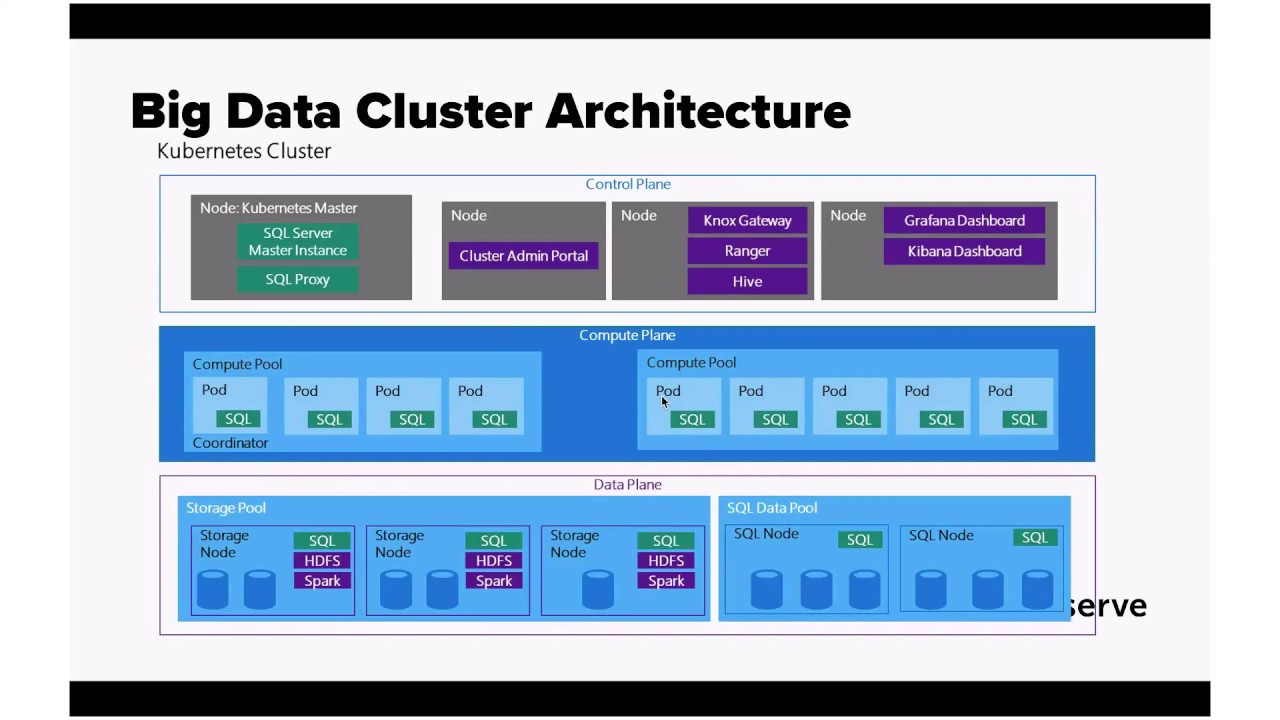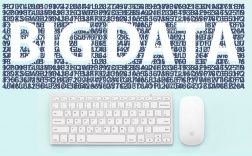Introduction
The era of big data has revolutionized the way we live, work, and interact with the world around us. With the proliferation of digital technology, there has been an exponential increase in the amount of data generated and collected every day. But have you ever wondered where all this big data comes from?
The answer lies in the interconnectedness of our modern world. The sources of big data are diverse and encompass various aspects of our digital lives, from social media platforms to e-commerce transactions, from sensors and devices to government agencies and public institutions. In this article, we will explore the different origins of big data and how these sources contribute to the massive amounts of information available to us.
Social media platforms play a significant role in generating big data. With billions of users engaging with platforms like Facebook, Twitter, Instagram, and LinkedIn, a staggering amount of data is created every second. From status updates and photos to likes, comments, and shares, social media is a treasure trove of valuable information that provides insights into user behavior, interests, and preferences.
The rise of the Internet of Things (IoT) has also contributed to the generation of big data. IoT refers to the network of connected devices and sensors that gather and exchange data. From smart thermostats and fitness trackers to autonomous vehicles and industrial sensors, these devices generate vast amounts of data that can be harnessed for various applications like urban planning, healthcare monitoring, and energy management.
In addition to social media and IoT, the proliferation of mobile applications has significantly contributed to the accumulation of big data. With the advent of smartphones and tablets, we have become increasingly reliant on mobile apps for various tasks, such as banking, shopping, entertainment, and communication. These apps capture user information and behavior, providing valuable insights for businesses and organizations.
E-commerce and online transactions are another abundant source of big data. With the growing popularity of online shopping, millions of transactions occur every day, generating immense amounts of data related to consumer preferences, purchasing patterns, and market trends. This data is invaluable for businesses to understand customer behavior and make informed decisions.
Search engines and web browsing also play a crucial role in the generation of big data. Every time we perform a search or browse the internet, we leave a digital footprint that can be harnessed for various purposes. This data is utilized to improve search engine algorithms, personalize online experiences, and deliver relevant advertisements.
Individuals themselves are active generators of big data. As we navigate the digital landscape, we constantly produce data through our interactions with devices, social media, digital content, and online services. This includes everything from personal information shared on social media profiles to the content we create and interact with, such as blog posts, videos, reviews, and comments.
Furthermore, there is a wealth of open data sources available that contribute to the pool of big data. Open data refers to information that is freely available and accessible to the public. This can include government data, research studies, scientific databases, and even user-generated content. Open data sources serve as an invaluable resource for researchers, businesses, and individuals, enabling innovation and analysis in various domains.
Businesses themselves are significant generators of big data. Through their operations, transactions, and customer interactions, companies accumulate vast amounts of data about their products, services, customers, suppliers, and operations. This data can be analyzed and harnessed to gain insights, refine processes, and improve decision-making.
Last but not least, government agencies and public institutions contribute to the vast amount of big data available. These entities collect and store data related to a wide range of domains, including demographics, economics, healthcare, education, and infrastructure. This data plays a crucial role in policy-making, research, and the provision of public services.
To conclude, big data originates from a multitude of sources that are interconnected in our digital world. From social media to IoT, from mobile applications to e-commerce transactions, and from individual-generated data to open data sources, these diverse origins contribute to the massive amounts of information that shape our digital landscape. Understanding the sources of big data is crucial for harnessing its potential and unlocking meaningful insights that drive innovation and progress.
Social Media
Social media platforms have become an integral part of our daily lives, with billions of users actively engaging and sharing content. These platforms, such as Facebook, Twitter, Instagram, and LinkedIn, have transformed the way we connect, communicate, and share information. In the realm of big data, social media is a goldmine of valuable insights and trends.
Every time we post a status update, share a photo, like a post, or comment on a friend’s activity, we generate data points that contribute to the vast pool of big data. This data encompasses a wide range of attributes, including user demographics, interests, preferences, social connections, and online behavior. By analyzing this data, businesses and organizations gain valuable insights into their target audience, consumer behavior, and market trends.
Moreover, social media data provides a real-time window into public sentiment and opinions. As users freely express their thoughts and feelings on various topics, this information can be analyzed to gauge public opinions, monitor brand reputation, and even detect emerging trends or issues. Social media data has proven to be invaluable for businesses, marketers, and researchers looking to understand and engage with their target audience.
Additionally, social media has given rise to the phenomenon of influencer marketing. Influencers, who have amassed a large following on platforms like Instagram and YouTube, have become powerful marketing tools for brands. By leveraging data on influencers and their audiences, businesses can identify the right influencers to collaborate with, craft targeted marketing campaigns, and measure the impact of their collaborations through engagement metrics and conversions.
Furthermore, social media platforms employ sophisticated algorithms that utilize big data to personalize user experiences. By analyzing user behavior, interests, and preferences, platforms can curate tailored content, recommend relevant accounts to follow, and display targeted advertisements. The data generated by users’ interactions with content and advertisements further fuels these algorithms, creating a feedback loop that continually refines and improves the user experience.
It’s important to note that the vast amount of data generated by social media platforms raises concerns about user privacy and data security. With the growing awareness of data breaches and unauthorized access to personal information, social media companies are under increasing pressure to protect user data, implement stringent privacy policies, and provide transparent consent mechanisms. As users, it is crucial for us to remain vigilant and informed about the privacy settings and data sharing options on social media platforms.
In summary, social media platforms are a significant source of big data, providing a wealth of information about user demographics, interests, preferences, opinions, and online behavior. The data generated by users’ interactions on these platforms has transformed digital marketing, personalized user experiences, and shaped the way businesses engage with their target audience. However, it is important to balance the benefits of social media data with concerns related to privacy and data security.
Internet of Things
The Internet of Things (IoT) has emerged as a transformative technology that connects various devices and sensors, allowing them to communicate and share data. From smart thermostats and wearable fitness trackers to industrial sensors and autonomous vehicles, the IoT has become an integral part of our interconnected world. This network of connected devices generates massive amounts of data, forming a crucial source of big data.
One of the main drivers behind the proliferation of IoT devices is the ability to collect and analyze real-time data. Sensors embedded in devices capture information about the surrounding environment, such as temperature, humidity, movement, and location. This data can be harnessed for a multitude of applications, ranging from smart homes and cities to healthcare monitoring and industrial automation.
For example, in smart homes, IoT devices like smart thermostats, lighting systems, and security cameras collect data on energy usage, occupancy patterns, and security events. This data is not only useful for optimizing energy consumption and enhancing security but also provides valuable insights into user behavior and preferences.
In healthcare, wearable devices such as fitness trackers and smartwatches capture data on vital signs, activity levels, and sleep patterns. This data can be analyzed to monitor patients’ health conditions, detect anomalies, and provide personalized recommendations for wellness and disease management.
The IoT also plays a significant role in industrial settings, where sensors and devices are deployed to monitor and optimize processes, detect equipment failures, and ensure workplace safety. By collecting and analyzing data from these IoT devices, businesses can identify inefficiencies, predict maintenance needs, and improve operational efficiency.
Another important aspect of the IoT is its ability to enable real-time decision-making. By transmitting data from sensors and devices to centralized systems, organizations can access and analyze information in real-time. This allows for immediate action and response, improving efficiency, productivity, and safety in various domains.
However, the increased connectivity of IoT devices also raises concerns about data privacy and security. With more devices connected to the network, the potential for unauthorized access and data breaches becomes a significant threat. It is crucial for businesses and individuals to implement robust security measures and encryption protocols to protect IoT data from unauthorized access.
The integration of big data analytics with the IoT has the potential to revolutionize various industries. By analyzing the massive amounts of data generated by IoT devices, businesses can identify patterns, detect anomalies, and gain actionable insights. These insights can drive innovation, improve decision-making, and create new business opportunities.
In summary, the Internet of Things has emerged as a major source of big data, with connected devices and sensors generating vast amounts of information. From smart homes and healthcare to industrial settings, the IoT provides valuable data for optimizing processes, enhancing efficiency, and enabling real-time decision-making. While the IoT presents opportunities for transformative change, it is crucial to address concerns related to data privacy and security to fully harness its potential.
Sensors and Devices
Sensors and devices equipped with various measuring capabilities play a crucial role in the generation of big data. From temperature sensors and GPS devices to cameras and accelerometers, these tools collect data about the physical world and enable us to capture and analyze information in unprecedented ways.
One of the key functions of sensors is to monitor and measure environmental conditions. Temperature sensors, for example, can capture data about heat levels in a room, while humidity sensors detect moisture in the air. These measurements enable us to optimize energy consumption, ensure comfort, and maintain ideal conditions in various settings, such as homes, offices, and manufacturing facilities.
GPS devices are another important source of data. These devices provide precise location information, which is utilized in a wide range of applications, from navigation systems and ride-sharing platforms to asset tracking and supply chain management. The data collected by GPS devices enables us to monitor and optimize transportation routes, improve logistics operations, and enhance overall efficiency.
Cameras equipped with advanced imaging technologies also contribute to the generation of big data. Surveillance cameras capture video footage that can be used for security purposes, crowd monitoring, and traffic analysis. In addition, image recognition algorithms can analyze the visuals collected by cameras to identify objects, facial expressions, and patterns, creating valuable insights for various domains, including retail, healthcare, and urban planning.
Accelerometers and motion sensors are commonly found in devices like smartphones, fitness trackers, and gaming consoles. These sensors measure movement and acceleration, providing valuable data on activity levels, exercise patterns, and even gesture control. This data is utilized in fitness and wellness applications, virtual reality experiences, and gaming innovations.
Furthermore, sensors and devices in the realm of healthcare contribute to the generation of big data. Wearable devices like heart rate monitors, blood pressure monitors, and glucose monitors collect vital health data, allowing individuals to track their health parameters and make informed decisions. In a broader context, this data can be aggregated and analyzed to identify health trends, support medical research, and improve population health management.
Sensors and devices also play a significant role in collecting data in industrial settings. Industrial sensors monitor machinery and equipment, capturing data on operating conditions, performance metrics, and maintenance needs. This data enables proactive maintenance, reduces downtime, and optimizes manufacturing processes. In addition, sensors can also measure environmental factors in industrial environments to ensure worker safety and compliance with regulations.
As sensors and devices become more advanced and interconnected, they contribute to the exponential growth of big data. The data collected by these tools provides us with a deeper understanding of the physical world, enables real-time decision-making, and drives innovation across industries.
However, it is important to consider the ethical implications of sensor-generated data, especially in domains such as privacy and consent. It is essential to establish clear guidelines and regulations to protect individuals’ privacy rights and ensure responsible data collection and usage.
In summary, sensors and devices equipped with measuring capabilities are vital sources of big data. From environmental monitoring to location tracking, image capture to health monitoring, and industrial optimization to safety management, these tools provide valuable information about the physical world. By harnessing the data collected by sensors and devices, businesses, researchers, and individuals can unlock insights, drive innovation, and make informed decisions that shape our interconnected world.
Mobile Applications
In today’s digital age, mobile applications have become an indispensable part of our lives. From social networking and entertainment to productivity and health, mobile apps offer a wide range of functionalities and services. As we interact with these apps, we generate large amounts of data that contribute to the pool of big data.
Mobile applications capture data about user behavior, preferences, and interactions. Every tap, swipe, and interaction generates valuable information that can be analyzed to gain insights into user engagement, preferences, and usage patterns. This data is crucial for app developers and businesses to understand user needs, improve user experiences, and optimize their mobile apps.
Social media apps, such as Facebook, Instagram, and Twitter, collect vast amounts of data about user interactions, content preferences, and social connections. This data fuels algorithms that personalize the user experience, recommend relevant content, and target advertisements. Mobile apps also leverage real-time data, enabling users to stay connected and receive personalized updates and notifications.
E-commerce apps, like Amazon and eBay, generate significant amounts of data related to user purchasing behavior, browsing history, and product preferences. This data is invaluable for businesses to understand consumer trends, recommend personalized products, and optimize marketing strategies. E-commerce apps also collect data about user reviews and ratings, contributing to the overall product sentiment and customer feedback.
Productivity and collaboration apps, such as Microsoft Office, Google Docs, and Slack, capture data about user workflows, document edits, and collaboration patterns. This data can be utilized to improve productivity, streamline workflows, and enhance collaboration within teams and organizations. These apps often integrate with other platforms, such as cloud storage services, to facilitate seamless data synchronization and accessibility across devices.
Health and fitness apps, like Fitbit and MyFitnessPal, track various aspects of our wellbeing, including exercise, sleep, nutrition, and vital signs. This data helps users monitor their health goals, track progress, and make informed decisions about their lifestyle. Health and fitness apps often provide personalized recommendations based on user-generated data, enabling individuals to achieve their fitness and wellness objectives.
Location-based apps, such as Google Maps and Uber, rely on data from GPS and other sensors to provide real-time location services. These apps collect and analyze data about travel routes, transportation options, and user preferences. The data generated by these apps is utilized to optimize navigation, enhance transportation services, and provide personalized recommendations for nearby places and activities.
Mobile gaming apps also contribute to the generation of big data. These apps collect data about gameplay patterns, user preferences, and in-app purchases. The data is used to optimize game mechanics, design targeted marketing campaigns, and improve the overall gaming experience. In addition, mobile gaming apps often integrate social features, allowing users to compete, share achievements, and interact with other players, further generating valuable data for analysis.
It’s important to note that the collection and usage of mobile app data present privacy and security considerations. App developers and businesses must ensure that user data is handled responsibly and securely, adhering to privacy regulations and obtaining proper consent from users.
In summary, mobile applications generate a significant amount of data through user interactions, behaviors, and preferences. Social media, e-commerce, productivity, health and fitness, location-based, and gaming apps contribute to the pool of big data, providing valuable insights that drive app development, enhance user experiences, and shape marketing strategies. However, the responsible and ethical handling of user data remains a critical concern in the mobile app ecosystem.
E-commerce and Online Transactions
The rise of e-commerce has revolutionized the way we shop and conduct transactions. With the convenience of online shopping, millions of transactions occur every day, generating immense amounts of data that contribute to the realm of big data.
E-commerce platforms, such as Amazon, eBay, and Alibaba, capture vast amounts of data related to user purchasing behavior, browsing history, and product preferences. When users search for products, add items to their carts, and make purchases, valuable data is collected. This data provides insights into consumer trends, preferences, and buying patterns, enabling businesses to optimize their product offerings and marketing strategies.
Furthermore, e-commerce platforms leverage customer reviews and ratings as another important source of data. User feedback provides valuable insights into product satisfaction, quality, and customer service. These reviews shape future purchasing decisions and contribute to the overall sentiment and reputation of products and sellers.
Personalization is a key aspect of e-commerce platforms, and big data plays a crucial role in delivering tailored experiences. By analyzing user data, such as browsing history, purchase history, and demographic information, e-commerce platforms can make personalized product recommendations to users. This level of personalization enhances user engagement and increases the chances of conversion.
E-commerce platforms also generate data related to supply chain management and inventory optimization. By monitoring stock levels, delivery times, and customer demand, businesses can ensure efficient order fulfillment and minimize stockouts. Data analysis helps in forecasting demand, managing inventory, and improving overall operational efficiency.
Payment processors and financial institutions that facilitate online transactions also contribute to the generation of big data. Data related to payment methods, transaction amounts, and purchase frequency are valuable for fraud detection, risk assessment, and developing targeted financial services. This data helps in identifying patterns and anomalies that can indicate potential fraudulent activities.
Customer loyalty and retention programs in the e-commerce industry rely on data collected from past purchases, customer interactions, and behavior tracking. E-commerce platforms utilize this data to develop personalized loyalty programs, offer exclusive discounts, and create tailored marketing campaigns. The insights derived from this data help in building strong customer relationships, increasing customer satisfaction, and fostering brand loyalty.
Online marketplaces and peer-to-peer platforms, such as Airbnb and Uber, generate data related to user transactions, ratings, and reviews. This data provides transparency and credibility, enabling users to make informed decisions when engaging in sharing economy services. Furthermore, this data can be utilized to evaluate service providers, improve customer experiences, and monitor the overall quality of the platform.
Data security and privacy are of utmost importance in the e-commerce and online transaction domain. As users provide personal and financial information during online transactions, it is essential for businesses to implement rigorous security measures, encryption protocols, and privacy policies to safeguard customer data and build trust.
In summary, e-commerce platforms and online transactions generate significant amounts of data that contribute to the realm of big data. User purchasing behavior, product preferences, reviews, and supply chain management are among the valuable information collected. By leveraging this data, businesses can optimize their offerings, personalize user experiences, and enhance overall operational efficiency. However, proper security measures and privacy safeguards must be implemented to protect customer data and maintain trust in the e-commerce ecosystem.
Search Engines and Web Browsing
Search engines and web browsing play a crucial role in our online experiences, providing access to a vast amount of information at our fingertips. As we search the web and browse various websites, we generate data that contributes to the growing realm of big data.
Search engines, such as Google, Bing, and Yahoo, collect data about our search queries, browsing history, and interaction with search results. This data helps search engines understand user intent, refine search algorithms, and deliver more relevant and personalized search results. Additionally, search engines employ machine learning techniques to analyze user data and continuously improve the accuracy and relevance of search results.
Web browsing data, including page visits, time spent on websites, and click-through rates, provides valuable insights into user interests, preferences, and online behavior. Websites use this data to improve user experiences, optimize website design, and personalize content based on user preferences. It also helps businesses analyze the effectiveness of their online marketing efforts and tailor advertisements to reach their target audience.
Cookies, small text files stored on users’ devices, play a crucial role in collecting and retaining browsing data. They allow websites to remember user preferences, maintain login sessions, and track user activities across different sessions. Cookies provide insights into user behavior, allowing businesses to provide more personalized and targeted experiences for users.
Web analytics tools, such as Google Analytics, give website owners and businesses access to valuable data about website traffic, user demographics, and user engagement. These tools provide insights into key metrics, such as the number of visitors, bounce rates, and conversion rates. By analyzing this data, businesses can optimize their websites, content, and marketing strategies to better meet the needs of their target audience.
Furthermore, search engines and websites use data to deliver personalized advertisements. This data includes user preferences, browsing history, and demographics. Personalized ads increase the chances of users finding relevant products and services, while also enabling businesses to reach their target audience more effectively. However, privacy concerns arise with the collection and usage of personal data for targeted advertising, leading to the implementation of privacy regulations and user consent mechanisms.
Search engine optimization (SEO) heavily relies on data analysis to improve website visibility and rankings in search engine results. By analyzing search trends, competitors’ strategies, and user behavior, businesses can optimize their websites and content to align with search engine algorithms, improving organic search visibility and attracting more targeted traffic.
Data generated from web browsing also contributes to the field of web scraping, where data is extracted from websites for various purposes, such as market research, competitive analysis, and content aggregation. Web scraping tools collect data on a large scale, providing valuable insights and information for businesses and researchers.
Lastly, voice search has gained significant traction in recent years with the proliferation of voice-activated virtual assistants. Voice search data, including spoken queries and user interactions, adds a new dimension to search engine data. Voice search enables more conversational interactions and creates opportunities for businesses to optimize their content for voice-based queries.
In summary, search engines and web browsing generate vast amounts of data that contribute to the realm of big data. Search queries, browsing history, and website interactions provide valuable insights into user behavior, preferences, and interests. Businesses and websites use this data to optimize their online presence, deliver personalized experiences, and improve search engine visibility. However, it is essential to balance personalized experiences with privacy considerations and data protection regulations.
Data Generated by Individuals
As we navigate the digital landscape, we constantly generate data through our interactions with devices, social media, digital content, and online services. This data, generated by individuals, is a significant source of big data and provides valuable insights into human behavior, preferences, and interests.
One of the main ways individuals generate data is through social media. We share personal information on social media profiles, post updates about our lives, and engage with content shared by others. Social media platforms collect and analyze this data to understand user behavior, interests, and demographics. This data helps businesses tailor their products and services, target advertisements effectively, and improve user experiences.
Additionally, the content we create and interact with on social media, such as blog posts, videos, reviews, and comments, generates valuable data. These user-generated pieces of content contribute to the overall sentiment, engagement, and trends on social media platforms. Social media analytics leverage this data to identify influential users, detect emerging topics, and gauge public sentiment on various issues.
Online searches and browsing behavior also generate a wealth of data. Every time we search for information or browse websites, our actions create a digital footprint. Search engines and website analytics platforms analyze this data to understand user preferences, optimize search results, and personalize online experiences. Businesses use this data to refine their online marketing strategies, improve website design, and deliver targeted advertisements.
Furthermore, individuals directly generate data through their interactions with digital content and services. For example, when we stream music or watch videos, our choices provide data on our preferences and interests. Streaming platforms leverage this data to curate personalized recommendations, create playlists, and suggest similar content that aligns with our preferences.
Health and fitness tracking devices, such as fitness trackers and smartwatches, generate data about our physical activity, heart rate, sleep patterns, and more. Individuals can monitor their health and fitness goals, track progress, and make informed decisions based on the data collected. This data also contributes to research studies on population health, wellness trends, and the impact of lifestyle choices on overall well-being.
Online surveys, feedback forms, and opinion polls are another way individuals generate data. By voluntarily sharing their opinions and experiences, individuals contribute valuable data for market research, public opinion analysis, and academic studies. This data helps businesses understand customer satisfaction, improve their products and services, and shape decision-making processes.
AdditionaIly, individuals generate data through their financial transactions. Online banking, e-commerce purchases, and digital payment platforms generate valuable data points that enable financial institutions to analyze consumer spending patterns, detect fraudulent activities, and tailor financial products and services to individual needs.
It is worth mentioning that concerns regarding privacy and data protection arise from the data generated by individuals. It is essential for individuals to be aware of the data they generate and how it is used. Moreover, organizations should ensure transparent and secure data practices, obtain appropriate consent, and adhere to privacy regulations to protect individual data.
In summary, individuals generate a significant amount of data through their interactions with devices, digital content, and online services. Data generated by individuals provides valuable insights into user behavior, interests, and preferences. This data is utilized by businesses, researchers, and organizations to personalize experiences, improve products and services, and gain a better understanding of human behavior in the digital age. However, ensuring privacy and data protection is crucial to maintaining trust and safeguarding individuals’ personal information.
Open Data Sources
Open data sources are publicly available datasets that provide a wealth of information on various topics. These datasets are accessible to anyone and play a significant role in contributing to the realm of big data. Open data sources encompass a wide range of domains, from government agencies and scientific research institutions to non-profit organizations and user-generated content.
Government agencies are one of the primary sources of open data. Many governments worldwide have established open data policies, making a wide array of information available to the public. This data includes demographic data, economic indicators, geographical information, transportation data, and more. Government open data can be utilized for research, policy analysis, urban planning, and public service improvement.
Scientific research institutions contribute to open data through publishing research findings and making datasets available to the public. From climate data to medical research data, these datasets serve as valuable resources for researchers, scientists, and educators. Open scientific data encourages collaboration, reproducibility of research, and accelerates the pace of scientific discovery.
Non-profit organizations also make significant contributions to open data. Organizations focused on social, environmental, and economic issues often share datasets related to their causes. This data can include statistics, surveys, and reports from their research initiatives. Open data from non-profit organizations can be utilized for policy advocacy, awareness campaigns, and community development projects.
User-generated content is another source of open data. Platforms like Wikipedia, Reddit, and Wikidata allow users to contribute and edit information, creating vast repositories of open data. Crowdsourced data from these platforms provide insights into a wide range of topics, including history, culture, trivia, and more. This data is often freely accessible, making it a valuable resource for researchers, journalists, and educators.
The availability of open data has been further enhanced by initiatives like Open Government Data and Open Data Portal. These initiatives aim to consolidate and make accessible datasets from various sources. Open Data Portals provide a centralized platform where users can discover, access, and analyze datasets from different government agencies and institutions.
Open data sources are invaluable in driving innovation and research. They provide opportunities for individuals and organizations to analyze large-scale datasets, identify patterns, and gain novel insights. Data scientists, researchers, and businesses can utilize open data to develop data-driven solutions, create innovative applications, and inform decision-making processes.
Open data fosters transparency, accountability, and citizen engagement. By making data available to the public, government agencies and organizations promote a culture of openness and facilitate citizen empowerment. Open data enables individuals and communities to scrutinize government actions, participate in decision-making processes, and develop innovative solutions to societal challenges.
However, it is essential to ensure the quality, reliability, and privacy compliance of open data. Data sources should be properly vetted and curated to maintain data integrity and protect individual privacy. Proper data governance practices, including data anonymization and security protocols, are crucial to balance the benefits of open data with privacy concerns.
In summary, open data sources provide an expansive range of freely accessible datasets that contribute to the realm of big data. Government agencies, scientific research institutions, non-profit organizations, and user-generated content platforms are among the key sources of open data. Open data fosters innovation, transparency, and citizen engagement, offering opportunities for analysis, research, and development of data-driven solutions. However, ensuring data quality and privacy protection is crucial to maintain the integrity and trustworthiness of open data sources.
Data Generated by Businesses
Businesses of all sizes and across industries generate vast amounts of data as part of their operations, interactions, and transactions. This data, generated by businesses, contributes significantly to the realm of big data and provides valuable insights into various aspects of their operations and customer behavior.
One of the primary sources of data generated by businesses is customer data. Through interactions with customers, businesses collect data such as demographics, contact information, purchase history, and preferences. This data is crucial for understanding customer behavior, segmenting customer groups, and creating targeted marketing strategies. By analyzing customer data, businesses can personalize their offerings, enhance customer experiences, and improve customer retention.
Transactional data is another significant source of information generated by businesses. Every purchase, payment, and financial transaction generates data that businesses can use to analyze sales patterns, identify product demand, and forecast future trends. Transactional data is instrumental in optimizing inventory, supply chain management, and pricing strategies.
Marketing data generated by businesses provides insights into the effectiveness of marketing campaigns, advertising channels, and customer engagement strategies. Data on click-through rates, conversions, and customer response helps businesses refine their marketing approaches, allocate resources effectively, and measure campaign success. Marketing data also plays a vital role in personalizing marketing efforts and delivering targeted advertisements.
Operational data covers various aspects of business operations, including production, logistics, and human resources. Businesses collect and analyze data related to production output, manufacturing processes, operational efficiency, and employee performance. Operational data allows businesses to identify bottlenecks, streamline processes, and optimize resource allocation for improved productivity and cost-effectiveness.
Financial data generated by businesses provides insights into the financial health, profitability, and performance of the organization. This data includes income statements, balance sheets, cash flow statements, and other financial metrics. By analyzing financial data, businesses can assess their financial position, make informed decisions, and identify opportunities for growth and investment.
Customer feedback and reviews are valuable sources of data generated by businesses. Feedback obtained through surveys, reviews, and customer support interactions offers insights into customer satisfaction, pain points, and areas for improvement. Businesses can leverage this data to enhance product and service offerings, address customer concerns, and build stronger customer relationships.
Businesses also generate data through their online presence, including website analytics, social media metrics, and search engine optimization (SEO) data. Website analytics provide insights into website traffic, user behavior, and conversion rates. Social media metrics allow businesses to monitor brand reputation, engagement metrics, and user sentiment. SEO data helps businesses improve their online visibility, website rankings, and organic search traffic. These data sources collectively contribute to enhancing online presence and optimizing digital marketing efforts.
Lastly, businesses generate data through partnerships, collaborations, and external sources. Data acquired from third-party vendors, suppliers, and industry research reports contribute to the overall pool of data available to businesses. Such data enhances market intelligence, provides industry benchmarks, and helps businesses make informed decisions based on a broader perspective.
In summary, businesses generate a significant amount of data through their operations, customer interactions, and online presence. Customer data, transactional data, marketing data, operational data, financial data, and customer feedback are among the various sources of data generated by businesses. Analyzing this data helps businesses personalize experiences, optimize operations, make data-driven decisions, and enhance customer relationships. However, businesses must also ensure proper data management, privacy compliance, and security protocols to protect sensitive information and maintain consumer trust.
Government Agencies and Public Institutions
Government agencies and public institutions are massive generators of data that contribute significantly to the growing realm of big data. These entities collect, store, and analyze vast amounts of data related to demographics, economics, health, education, transportation, and much more. The data generated by government agencies and public institutions is used for policy-making, public service provision, research, and decision-making processes.
Demographic data is a crucial aspect of government-generated data. Census data, birth and death records, and population statistics provide insights into the composition, growth, and characteristics of a population. This data is used for urban planning, resource allocation, healthcare planning, and social policy development.
Economic data generated by government agencies includes GDP, employment statistics, trade data, and inflation rates. This data helps in understanding economic trends, monitoring performance, and formulating economic policies. It is utilized by businesses, economists, researchers, and policymakers to make informed decisions and drive economic growth.
Government agencies and public institutions generate health-related data that is vital for healthcare planning, research, and public health initiatives. Data related to disease prevalence, healthcare utilization, mortality rates, and health service accessibility helps in identifying health disparities, formulating preventive strategies, and promoting population health.
Educational institutions and government agencies generate data that provides insights into educational outcomes, school performance, enrollment rates, and educational attainment levels. This data assists in evaluating educational policies, identifying areas for improvement, and addressing educational inequities.
Transportation data is another significant category generated by government agencies. Data related to traffic flow, transportation infrastructure, and public transportation usage helps in optimizing transportation networks, alleviating congestion, and improving public transportation services.
Law enforcement agencies generate crime data and public safety statistics. The data on crime rates, types of crimes, and geographical patterns helps in resource allocation for law enforcement, crime prevention, and the development of public safety strategies.
Environmental data generated by government agencies includes information on air quality, water quality, climate patterns, and biodiversity. This data helps in monitoring the environment, addressing environmental concerns, and formulating sustainable development policies.
Government-generated data also encompasses legal and regulatory data, including laws, regulations, and public records. These datasets are essential for the legal system, regulatory compliance, and public access to information.
Open Data initiatives by government agencies and public institutions play a crucial role in making a vast amount of these datasets publicly accessible. Open Data portals allow the general public, researchers, businesses, and other organizations to access, analyze, and utilize government-generated data for various purposes, such as research, innovation, and accountability.
Additionally, government agencies and public institutions collaborate with other entities, including research organizations, non-profit organizations, and private companies. Through these collaborations, data generated by government agencies can be combined with other datasets to provide more comprehensive insights, facilitate research, and drive innovation.
Data generated by government agencies and public institutions fuels evidence-based decision-making, policy formulation, and the development of efficient and effective public services. The utilization of this data contributes to improving public services, addressing societal challenges, and fostering transparency and accountability in governance.
It is important to ensure that government-generated data adheres to privacy regulations, ensures data security, and maintains strict confidentiality protocols to protect sensitive information. Balancing the benefits of data utilization with privacy concerns and ethical considerations is crucial in enabling informed decision-making and maintaining public trust in government agencies and public institutions.
Conclusion
The sources of big data are vast and diverse, stemming from various aspects of our digital lives. Social media platforms, Internet of Things devices, sensors and devices, mobile applications, e-commerce transactions, search engines, data generated by individuals, open data sources, data generated by businesses, and data from government agencies and public institutions all contribute to the massive amounts of information available to us.
These sources provide insights into user behavior, preferences, interests, market trends, and societal patterns. By analyzing and harnessing this data, businesses can optimize their offerings, personalize user experiences, and make informed decisions. Researchers can uncover meaningful patterns, identify correlations, and advance scientific knowledge. Governments and public institutions can utilize data to formulate evidence-based policies, allocate resources efficiently, and improve public services.
However, it is important to address the ethical considerations and privacy concerns associated with big data. Data security, privacy regulations, and responsible data management practices must be prioritized to protect individuals’ personal information and maintain public trust.
The future of big data holds immense potential for innovation, problem-solving, and progress. As technology continues to advance and connectivity expands, the generation of big data will only increase. It is essential for individuals, businesses, and organizations to adapt and harness the power of big data responsibly, leveraging its insights for the benefit of society.
In this fast-paced digital landscape, continuously monitoring and understanding the sources of big data will enable us to navigate and leverage the vast amount of information available. By staying informed and adaptive, we can seize the opportunities that big data presents, while addressing the challenges and ensuring its responsible application for the betterment of individuals, organizations, and society as a whole.

























